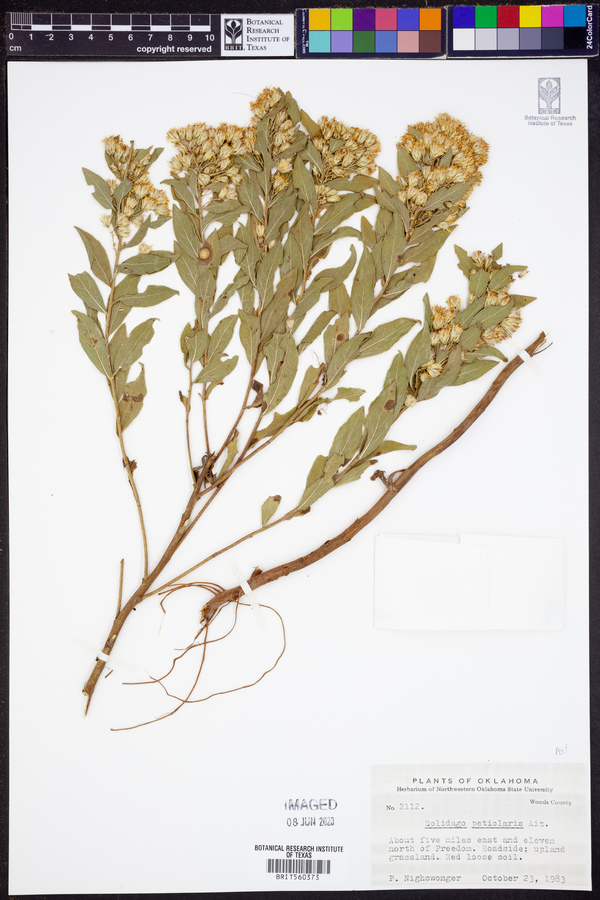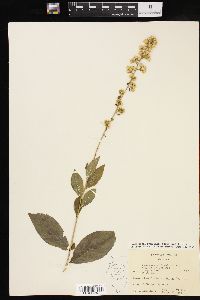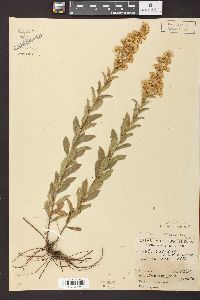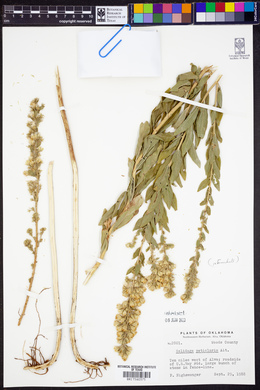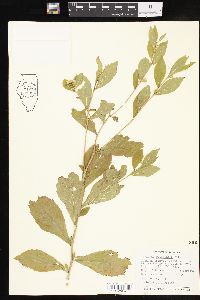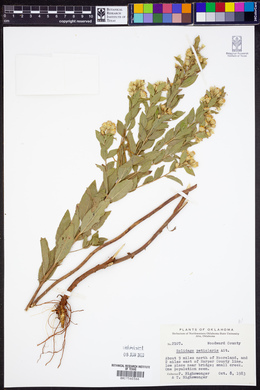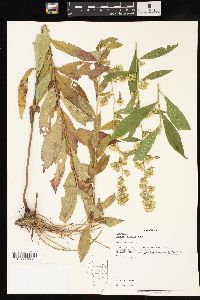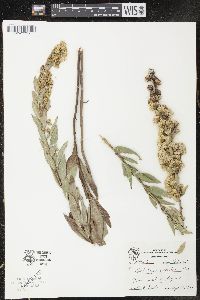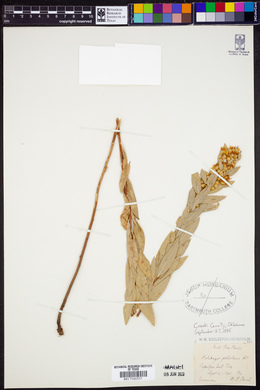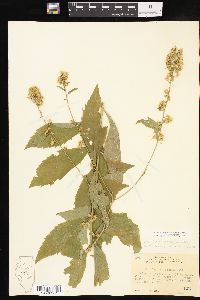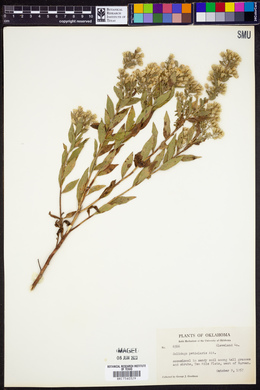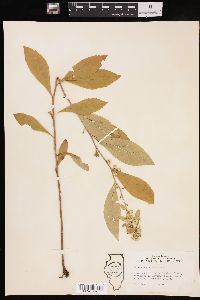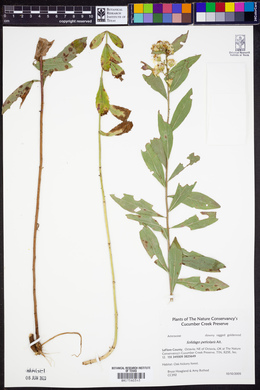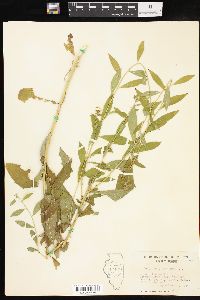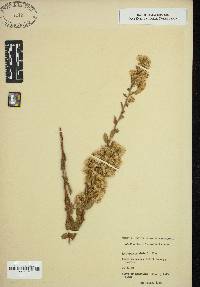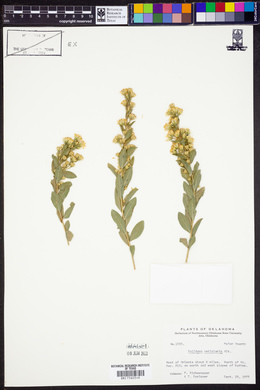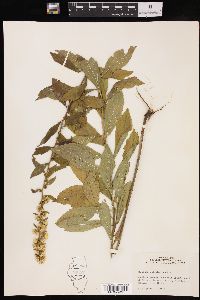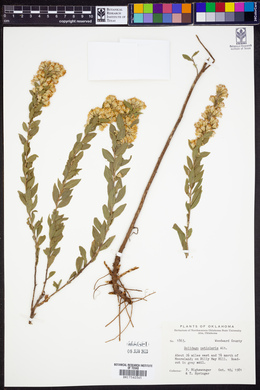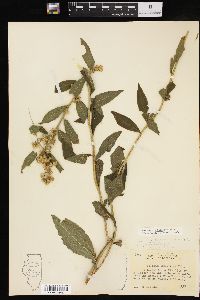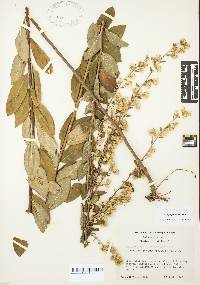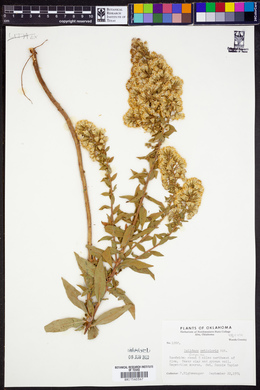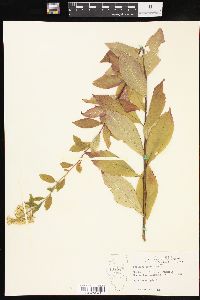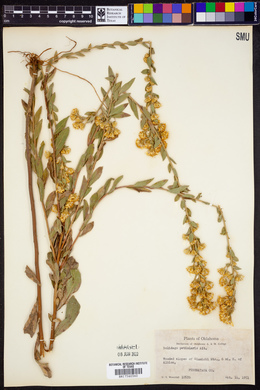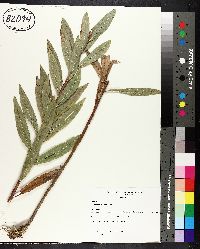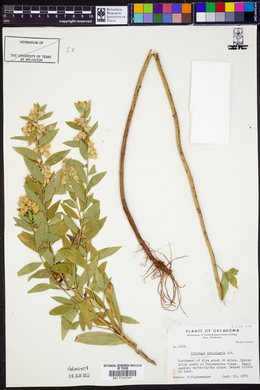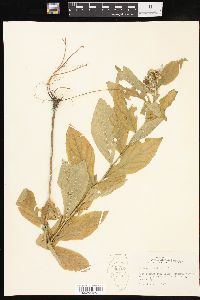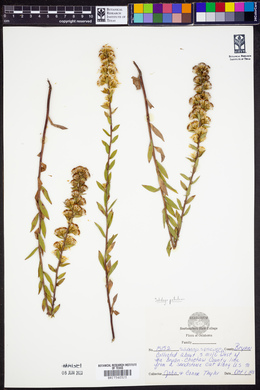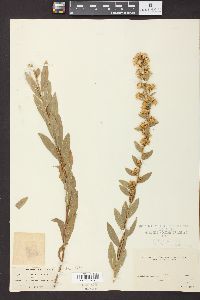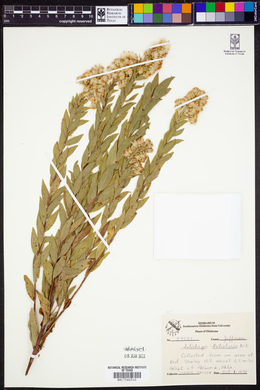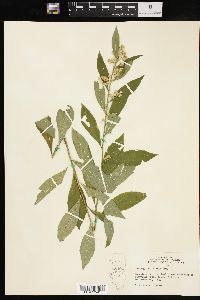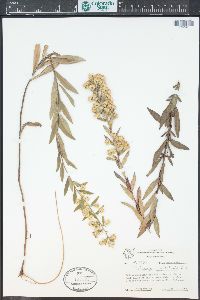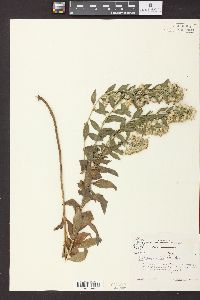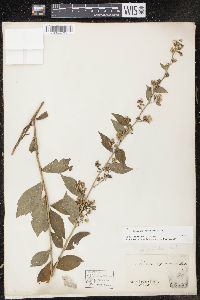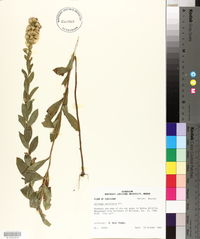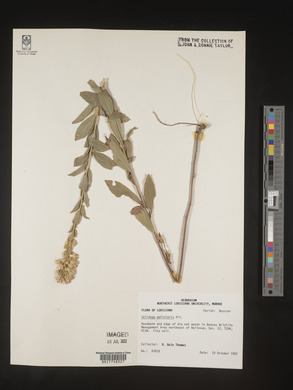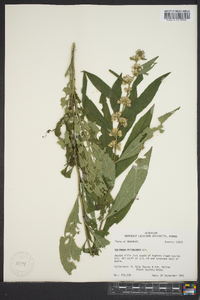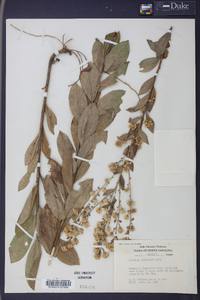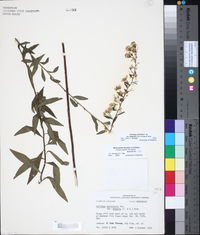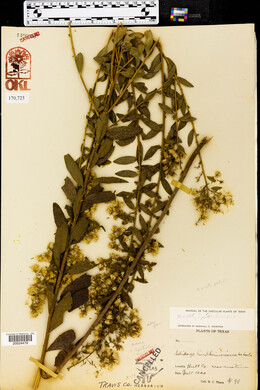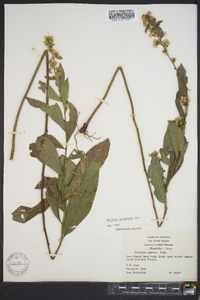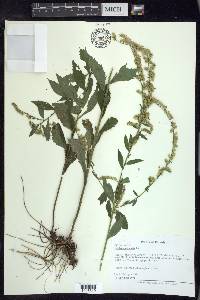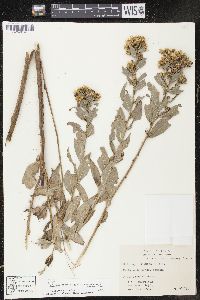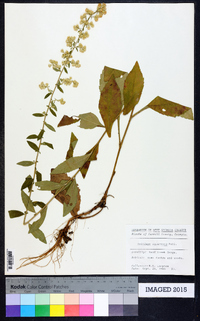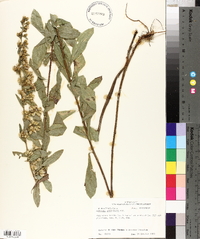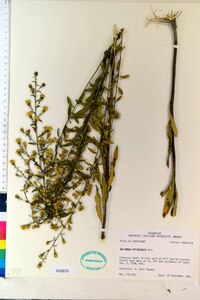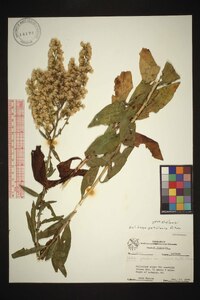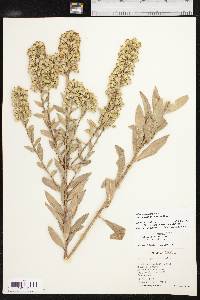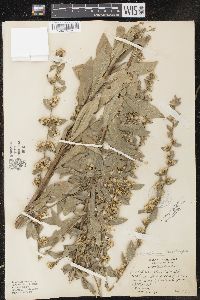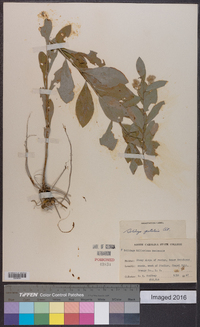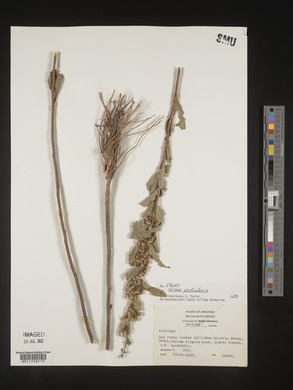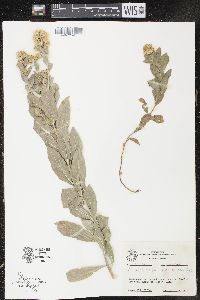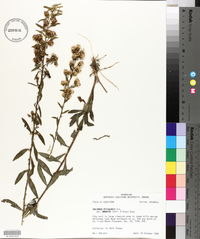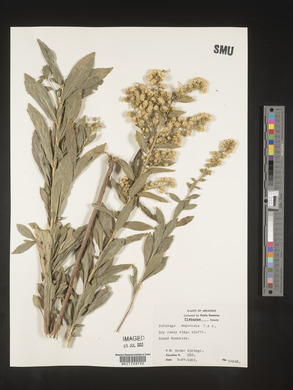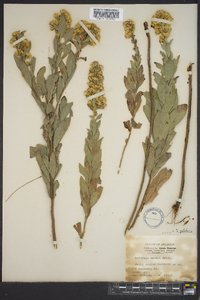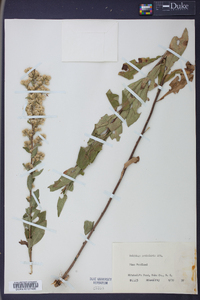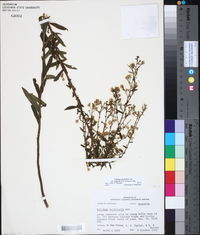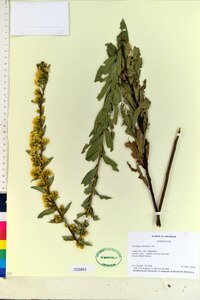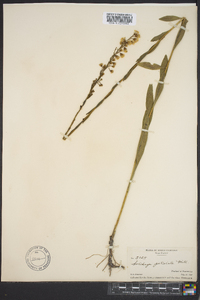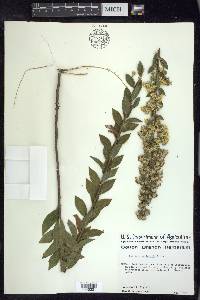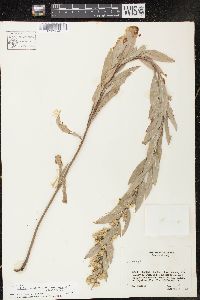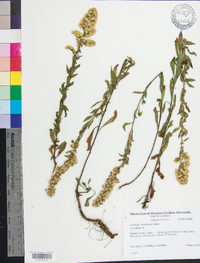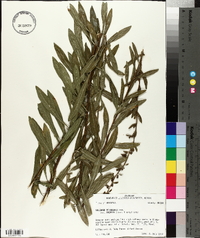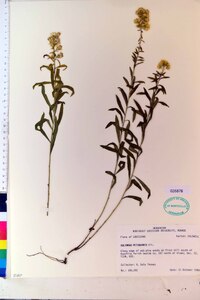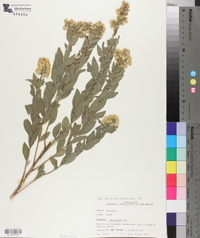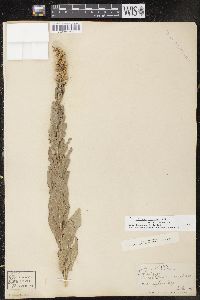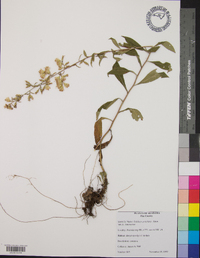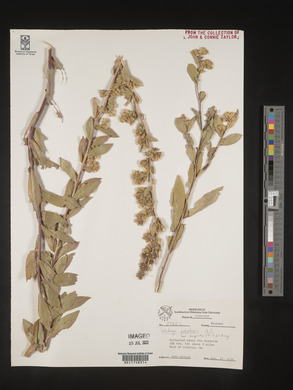Solidago petiolaris
|
|
|
|
Family: Asteraceae
Downy Ragged Goldenrod
|
Plants 40-150 cm; caudices stout, sometimes with long slender rhizomes. Stems 1-20(-50+), stout, finely puberulent or scabrous-puberulent at least distally. Leaves: basal absent at flowering; cauline sessile to short-petiolate; blades usually lanceolate-elliptic or ovate, sometimes linear-lanceolate, 30-150 × 5-30 mm, thick and firm, margins entire or few toothed, somewhat to much reduced distally, abaxial faces sometimes resinous and shiny, glabrous or strigillose (hairs mostly 0.1-1.4 mm), adaxial glabrous or scabrous. Heads 10-190+ in paniculiform (rarely racemiform) arrays, usually elongate, usually leafy-bracteate, bracts similar to distal leaves but reduced; branches stiffly ascending, not secund, sometimes elongate. Peduncles mostly 2-15 mm, bracteolate, sparsely to densely short hispid-strigose. Involucres campanulate, 4.5-7.5 mm. Phyllaries in 3-4 series, unequal, linear-lanceolate, acute to attenuate, ± squarrose-tipped, glabrous or moderately strigose, sparsely to moderately stipitate-glandular, sometimes viscid. Ray florets (5-)7-9; laminae 3-7 × 1-2 mm. Disc florets (8-)10-16; corollas 4-5 mm, lobes ca. 1-2 mm. Cypselae 3-4 mm, glabrous or glabrate; pappi ca. 4 mm. 2n = 18, 36, 54. Late Aug-Oct(-Nov). Woods and open places, especially sandy soils; 0-1400[-2300] m ; Ala., Ark., Fla., Ga., Ill., Kans., La., Mo., Nebr., N.Mex., N.C., Okla., S.C., Tex.; Mexico (Coahuila). Solidago petiolaris is reported from Colorado but that report has not been confirmed. G. L. Nesom (1990j) discussed variation in the species and mapped the distribution. It is variable in leaf and phyllary shape and indument. Although several varieties have often been recognized in floras, the characters used to distinguish them form continua of variation that do not break into distinct groupings. Several general trends are worth noting. Plants in the Ozarks often have very resinous leaves; that does not appear to correlate with phyllary indument traits. Phyllary pubescence varies in a continuous fashion as well, with the numbers and distribution of hairs not breaking into discontinuous ranges. Diploids are known from throughout the range; one report of a tetraploid comes from North Carolina. Two reports of tetraploids from Florida were based on misidentified specimens. Plants with compact short arrays approach S. wrightii in this trait.
Plants 4-15 dm from a stout caudex, sometimes with long, slender rhizomes as well; stems finely puberulent or scabrous-puberulent above, generally glabrous below; lvs firm, lance- linear to more often lance-elliptic, elliptic, or ovate, 3-12 cm נ5-30 mm, entire or occasionally few-toothed, chiefly cauline, thick and strongly glutinous, glabrous, or scabrous along the midrib and main veins on both sides with short, loose, commonly subconic hairs 0.1-0.4 mm, or these rarely thinly scattered across the surface beneath; infl narrow and generally elongate, usually ±leafy-bracteate, the lower clusters sometimes elongate and stiffly ascending but not secund; peduncles 3-15 mm; invol 4.5-7.5 mm, atomiferous-glandular to occasionally glabrous, its bracts strongly imbricate, the outer with acute, sometimes squarrose tip, the inner erect and often blunter; rays (5-)7-9, 3-7 mm; disk-fls (8-)10-16; achenes glabrous or nearly so; 2n=18, 36. Rocky woods and open places, especially in sandy soil; N.C. to Neb., s. to Fla., La., and N.M., reaching our range in c. Mo. All or nearly all our plants belong to the Ozarkian var. angusta (Torr. & A. Gray) A. Gray, as described above. (S. angusta) The widespread but chiefly more southern var. petiolaris, more puberulent (especially on the lower surface of the lvs) and less glutinous, probably does not reach our range. Gleason, Henry A. & Cronquist, Arthur J. 1991. Manual of vascular plants of northeastern United States and adjacent Canada. lxxv + 910 pp. ©The New York Botanical Garden. All rights reserved. Used by permission. |

